- California Assembly OKs highest minimum wage in nation
- S. Korea unveils first graphic cigarette warnings
- US joins with South Korea, Japan in bid to deter North Korea
- LPGA golfer Chun In-gee finally back in action
- S. Korea won’t be top seed in final World Cup qualification round
- US men’s soccer misses 2nd straight Olympics
- US back on track in qualifying with 4-0 win over Guatemala
- High-intensity workout injuries spawn cottage industry
- CDC expands range of Zika mosquitoes into parts of Northeast
- Who knew? ‘The Walking Dead’ is helping families connect
Incheon Airport aims to fly higher with 2nd terminal
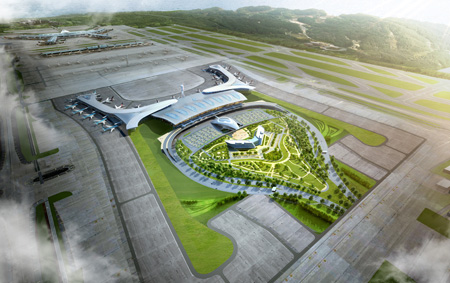
An aerial view of the design concept for the second terminal of Incheon International Airport. The airport operator plans to finish the construction of the new terminal by 2017.
By Kim Jae-won
Incheon International Airport Corp. (IIAC) seeks to fly higher with its second terminal, which it says will provide smart, green and eco-friendly services for an estimated 18 million passengers per year.
The new terminal, which is expected to be built by the end of 2017, is part of the state company’s third development plan to better meet increasing demand and become a bigger presence in Northeast Asia.
The government has keen interest in the $5 billion project, which it expects to be a successful example of a “creative economy” ― one of key economic policies of the Park Geun-hye administration ― a reference to creating jobs with high-tech and creative ideas.
“The new terminal will further promote the status of the airport on the international stage and contribute to the vitalization of our economy,” IIAC President and CEO Jung Chang-soo said.
IIAC estimates that with the third development plan, some 93,000 jobs will be created by 2017, along with a $12-billion economic impact and $4.4 billion in “added value.”
Moreover, if Incheon Airport becomes a hub for Northeast Asia, the economic impact on the local economy will increase by another $14 billion by 2020, according to the company.
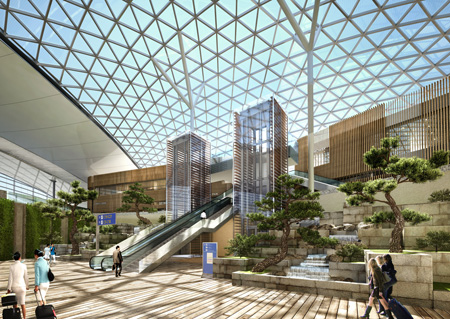
Seen is the inside of the second terminal of Incheon International Airport. The new terminal is part of the state company’s third development plan to better meet increasing demand.
The airport competes with five major airports in the region ― Beijing Capital International Airport, Shanghai Pudong International Airport, Hong Kong International Airport, Changi Airport of Singapore and Narita International Airport of Japan.
International aviation experts say that Incheon Airport may benefit from its geographic strength, being positioned to connect rising Asian economies, such as China and India, to the U.S.
“Incheon International Airport is ideally positioned to attract the increasing demand of China,” said Randy Tinseth, a marketing vice president of Boeing, at an October press conference.
Incheon Airport was the world’s second-largest airport by international cargo and the ninth by international passengers last year, according to data from the company.
“Incheon Airport plays a key role as the country’s gate, as 71 percent of the people coming to and going out of the country used the Incheon Airport last year,” an IIAC official said.
Thanks to the increasing demand of passengers, the company posted 1.6 trillion won in revenue, with 50 billion won in net profit in 2012, along with an operating profit ratio of 50 percent.
The IIAC takes pride not only in its financial soundness, but also in its eco-friendly facilities. The company is excited about its next-generation airport, pointing out the second terminal will be equipped with state-of-the-art eco-friendly technologies.
The main electricity sources of the terminal will be renewable energies, which will raise energy efficiency about 40 percent compared to the first terminal.
To achieve that goal, it will establish building-integrated photovoltaics (BIPV), which will offset initial costs by reducing the amount spent on building materials and labor. It will also set up a large solar energy electricity plant on vacant land nearby.
The transportation services will be upgraded, too, with the nation’s bullet train coming to the airport. IIAC is cooperating with the Korea Rail Network Authority to connect the railway into the airport by the end of this year.
Security is the top priority of the airport. It is designed to survive earthquakes up to a 6.5 magnitude and winds up to 118.8 kilometers per hour, and will be well-equipped with advanced technology facilities in its control towers.
The airport, which opened in 2001 and is located about 40 kilometers west of Seoul, has been consecutively rated as the world’s best by the Airports Council International.
Following the completion of the second phase of the expansion project in 2008, the government kicked off its third phase in 2011, pushing to build the second passenger terminal, among other things.
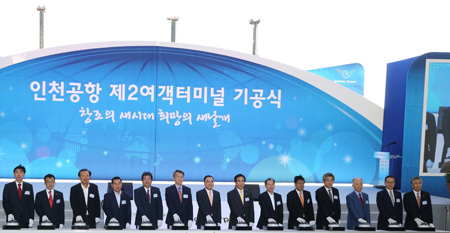
Incheon International Airport Corp. (IIAC) President and CEO Jung Chang-soo, sixth from left, prepares to press a button, along with Prime Minister Chung Hong-won, seventh from left, and Transport Vice Minister Yeo Hyung-ku, eighth from left, among other guests, during the groundbreaking ceremony for the airport’s second terminal in Incheon. The company said the new terminal will provide smart, green and eco-friendly services to an estimated 18 million passengers per year. (Courtesy of IIAC)
The additional terminal, located right next to the existing one, will have a total floor space of 384,000 square meters and be equipped with diverse energy-saving facilities, IIAC said.
Once the project is completed, the airport is expected to be able to handle 62 million passengers and 5.8 million tons of air cargo per year, the company said.
Currently, it has three runways and deals with some 44 million passengers and 4.5 million tons of cargo every year, making it one of the busiest airports in the world.
If the current trend of its constantly rising demand of both passengers and cargo continues, the airport is expected to experience saturation around 2017, according to the government.
The terminal construction project will require 2.2 trillion won ($2 billion), with the total amount for the third phase of the expansion project reaching 4.9 trillion won, it added.








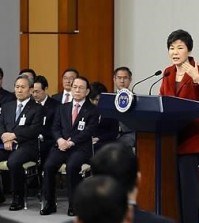

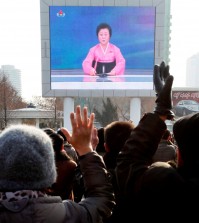





Pingback: Friendly Airport Limousine Narita Airport | neon - party bus
Pingback: Friendly Airport Limousine Narita Airport | ratings - thetaxiguide